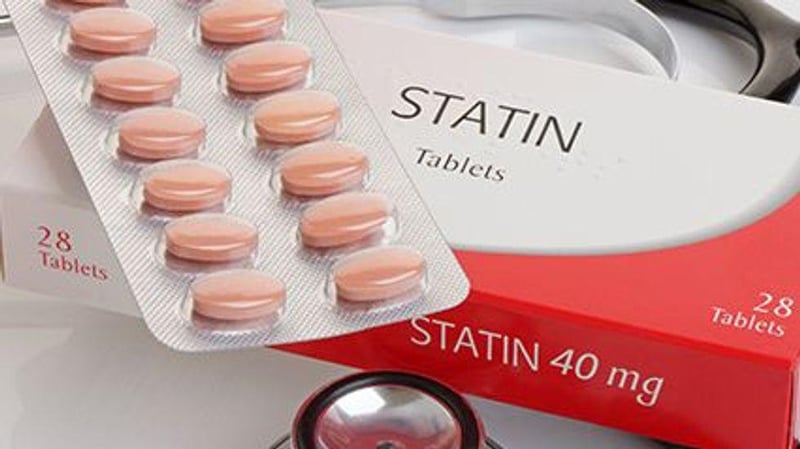Get Healthy!

- Amy Norton
- Posted August 1, 2023
Statins' Effectiveness May Rise With Patient Age: Study
Elderly adults who start on a statin may see an even bigger drop in their "bad" cholesterol levels than their younger counterparts do, a new study suggests.
The study, of nearly 84,000 Danish patients, found that those age 75 and up typically showed a stronger response after starting a low- to moderate-dose statin: Compared with the typical 50-year-old, their LDL cholesterol dipped by a few more percentage points.
Researchers said the findings suggest that older patients could begin with a lower-dose statin, to minimize the chances of side effects. While statins are considered safe, they may cause problems like muscle pain or elevated blood sugar in some people.
The odds of side effects generally go up with higher statin doses, and older adults are typically more vulnerable than their younger counterparts.
So, starting at a lower statin dose could be "an appealing alternative" for older patients, said senior researcher Dr. Marie Lund, of the Statens Serum Institute in Copenhagen.
She added, however, that there are additional things to consider -- including an older person's existing health conditions and the need for lowering the risk of a future heart attack or stroke.
Statins are among the most widely used medications globally, spurred by studies showing that along with cutting levels of "bad" LDL cholesterol, they help prevent heart attacks and strokes.
But clinical trials generally include few patients older than 70, so there is less evidence to guide statin use for those older adults.
Current treatment guidelines do recommend getting older adults' LDL down "dramatically" if they have already had a stroke or heart attack, said Dr. Howard Weintraub, clinical director of the Center for the Prevention of Cardiovascular Disease at NYU Langone in New York City.
The picture is somewhat different when it comes to "primary prevention" -- that is, preventing a first-time heart attack or stroke. Statin decisions are generally more individualized, Weintraub said.
And that, he said, means that age alone should not be the basis for anyone's starting dose.
"We've learned that age cut-offs are artificial," Weintraub said. "You have to look at the overall risk of cardiovascular disease."
He said the new study is "informative," in showing that older patients may have a greater response after starting a statin than younger patients do. But the average differences were also small, Weintraub added.
Nor, he said, does the study answer the bigger question: To what degree do lower statin doses cut the risk of heart attack, stroke and death in older patients?
"Should this shape the way that doctors treat patients?" Weintraub asked. "I don't think so."
The study, published Aug. 1 in the Annals of Internal Medicine, is based on nearly 84,000 Danish patients in a national registry. All were newly prescribed either simvastatin (Zocor) or atorvastatin (Lipitor) between 2008 and 2018.
Overall, patients age 75 and up showed more of an LDL dip after starting a low- or moderate-dose statin, versus patients younger than 50. With a 20-milligram (mg) dose of simvastatin, for example, older patients had an average LDL decline of 39%, versus 34% among the younger group.
On balance, 75-year-olds had an extra 2.6 percentage points shaved from their LDL after starting a low- to moderate-dose statin, versus the average 50-year-old. That difference was smaller with a high-dose statin (40 or 80 mg of atorvastatin).
It's not clear, however, whether that means a 75-year-old would get more protection against heart attack or stroke from a lower-dose statin, versus a younger person.
Like Weintraub, Lund noted that the study did not look at "hard outcomes" such as heart attack and death from cardiovascular causes.
"So, we can't directly assess any effects on cardiovascular disease risk reduction," she said.
Lund also stressed that the findings do not apply to older adults who've been on a statin for many years, since her team only studied people who were just starting one of the medications.
Weintraub also emphasized that point. "This should not be a signal for people to go to their doctor and ask for a lower dose," he said.
In his own practice, Weintraub said, he generally prescribes the statin type and dose that will get the LDL reduction a particular patient needs for reducing the risk of cardiovascular disease.
"If there are side effects," he said, "it's likely to be muscle aches that will go away once the statin is stopped."
That said, Weintraub added, if a patient prefers a lower dose, that is "better than no statin."
More information
The American Heart Association has more on treating high cholesterol.
SOURCES: Marie Lund, MD, PhD, department of epidemiological research, Statens Serum Institute, Copenhagen, Denmark; Howard Weintraub, MD, clinical director, Center for the Prevention of Cardiovascular Disease, NYU Langone Health, New York City; Annals of Internal Medicine, Aug. 1, 2023, online
